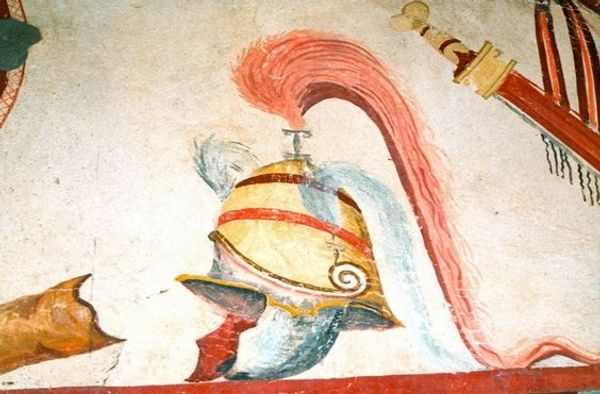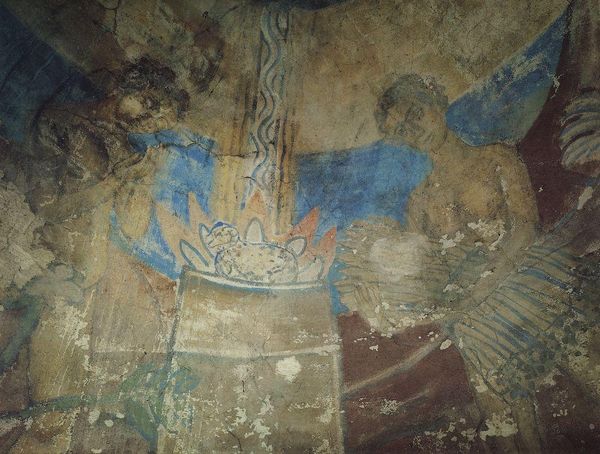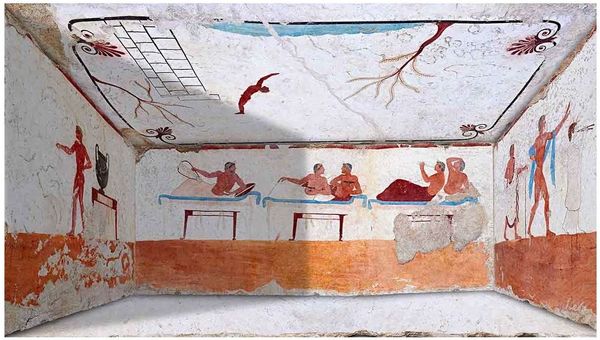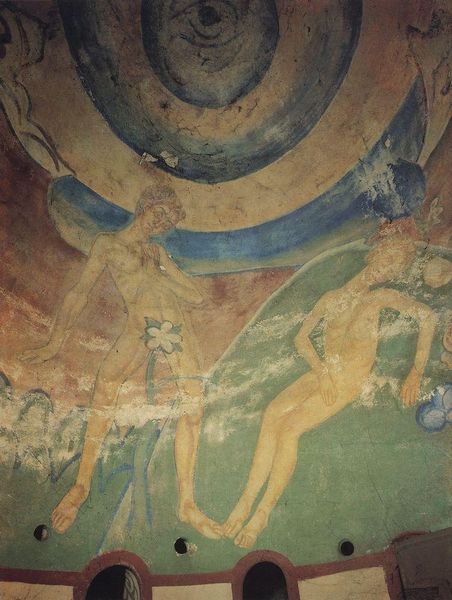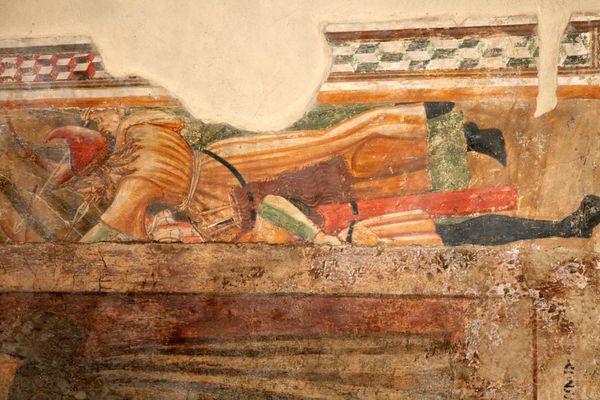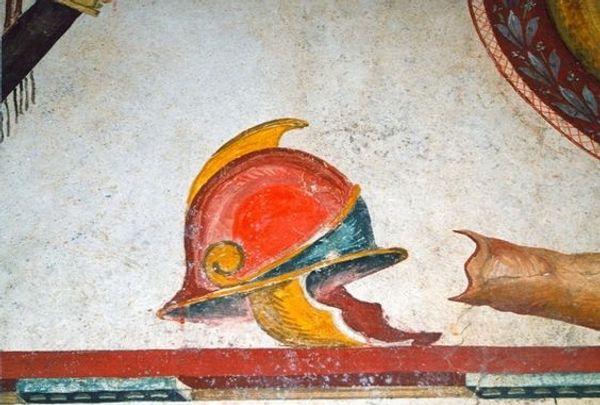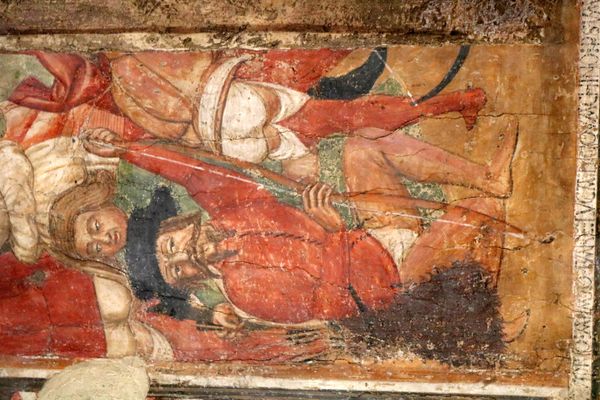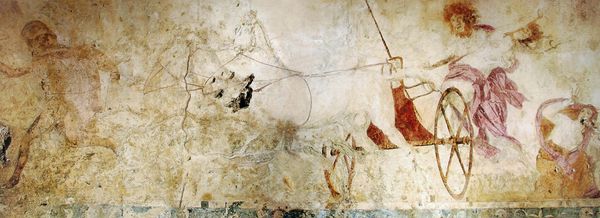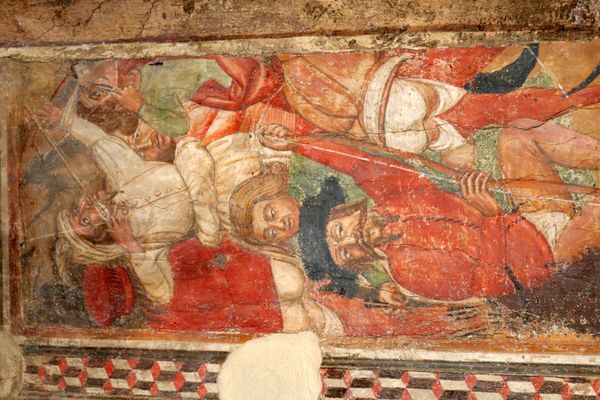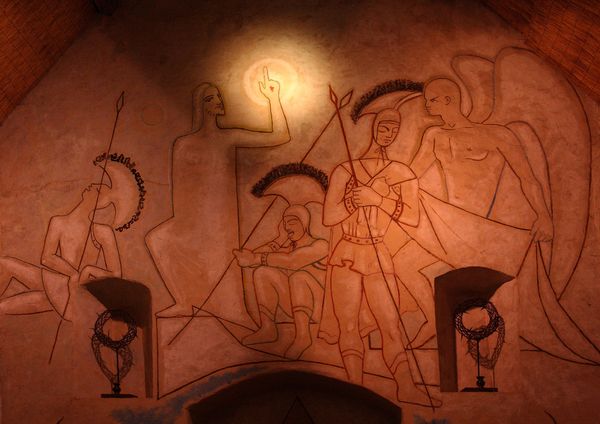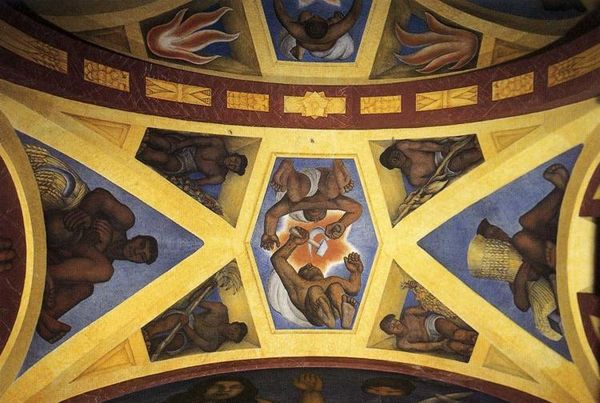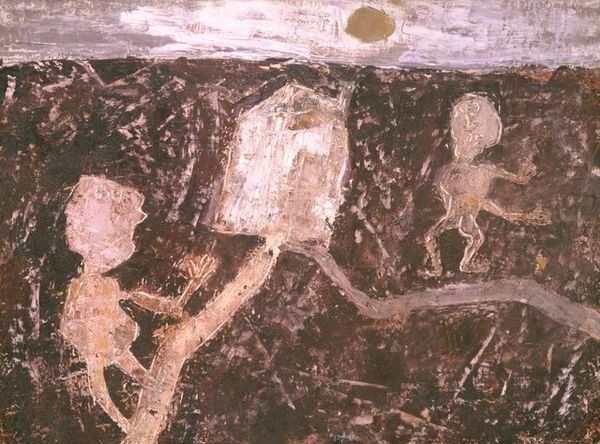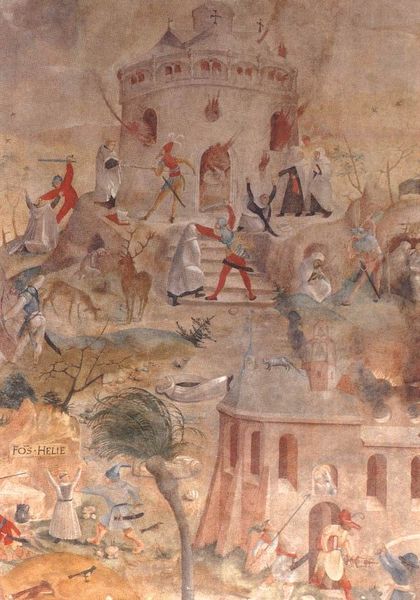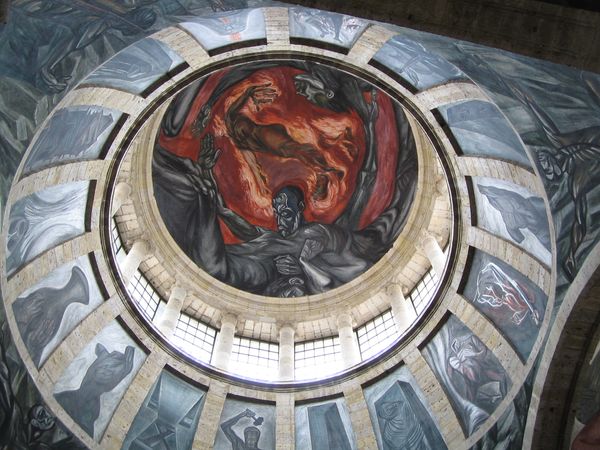
Military Armor, Arms, and Gear from the Tomb of Lyson and Kallikles in Ancient Mieza, Greece 150 BC
0:00
0:00
tempera, mural
#
tempera
#
greek-and-roman-art
#
landscape
#
painted
#
figuration
#
ancient-mediterranean
#
history-painting
#
mural
Copyright: Public domain
Editor: So, here we have a tempera mural from Ancient Mieza, Greece, around 150 BC, called "Military Armor, Arms, and Gear from the Tomb of Lyson and Kallikles". It feels incredibly…personal, even intimate, despite depicting military equipment. How do you interpret this work? Curator: What strikes me immediately is the representation of power and status so intrinsically linked to the individual, to personal identity. This isn't just about glorifying military might; it's about how armor, arms, and gear reflect and construct the identity of the deceased. How do you think this focus on individual identity challenges or reinforces broader narratives of ancient Greek society? Editor: That's a really interesting point. I hadn't considered how individual identity played into it so much, and not just broader things like "military might." So, in terms of social context, would you say this challenges or reinforces ideas about status at the time? Curator: I think it does both. On one hand, the presence of such items suggests an elite status, reinforcing existing social hierarchies. On the other, displaying these items within the tomb suggests a desire to project a particular image, a carefully curated identity. The specific choices matter— the specific helmets, the positioning of the swords. They all become performative aspects of identity, pushing back, even slightly, at rigid class boundaries through crafted self-representation. This makes the mural intensely powerful and inherently political, don't you think? Editor: Yes, that makes a lot of sense. It’s interesting to think about how someone actively wanted to be perceived, even in death, and how military gear helped define that perception. The individual agency within it is cool to consider. Thanks! Curator: Exactly! By situating this mural within broader frameworks of power, identity, and performance, we gain insight not only into ancient Greek funerary practices, but also the ongoing struggle to define and control self-narratives in ways that matter today.
Comments
No comments
Be the first to comment and join the conversation on the ultimate creative platform.
